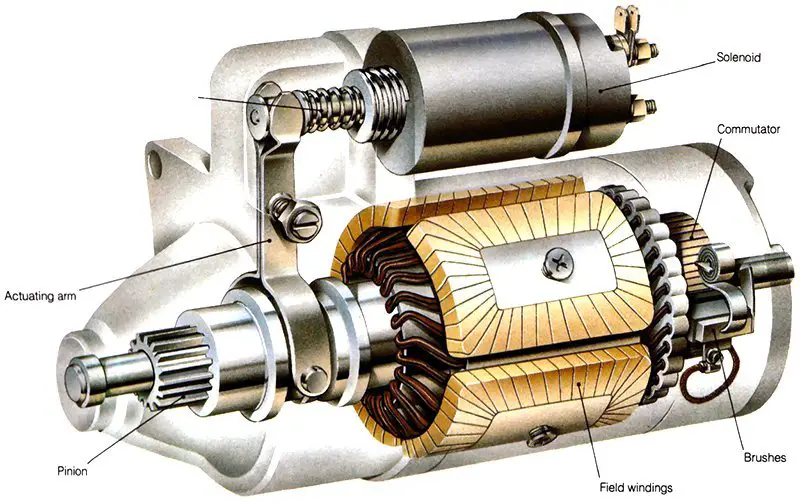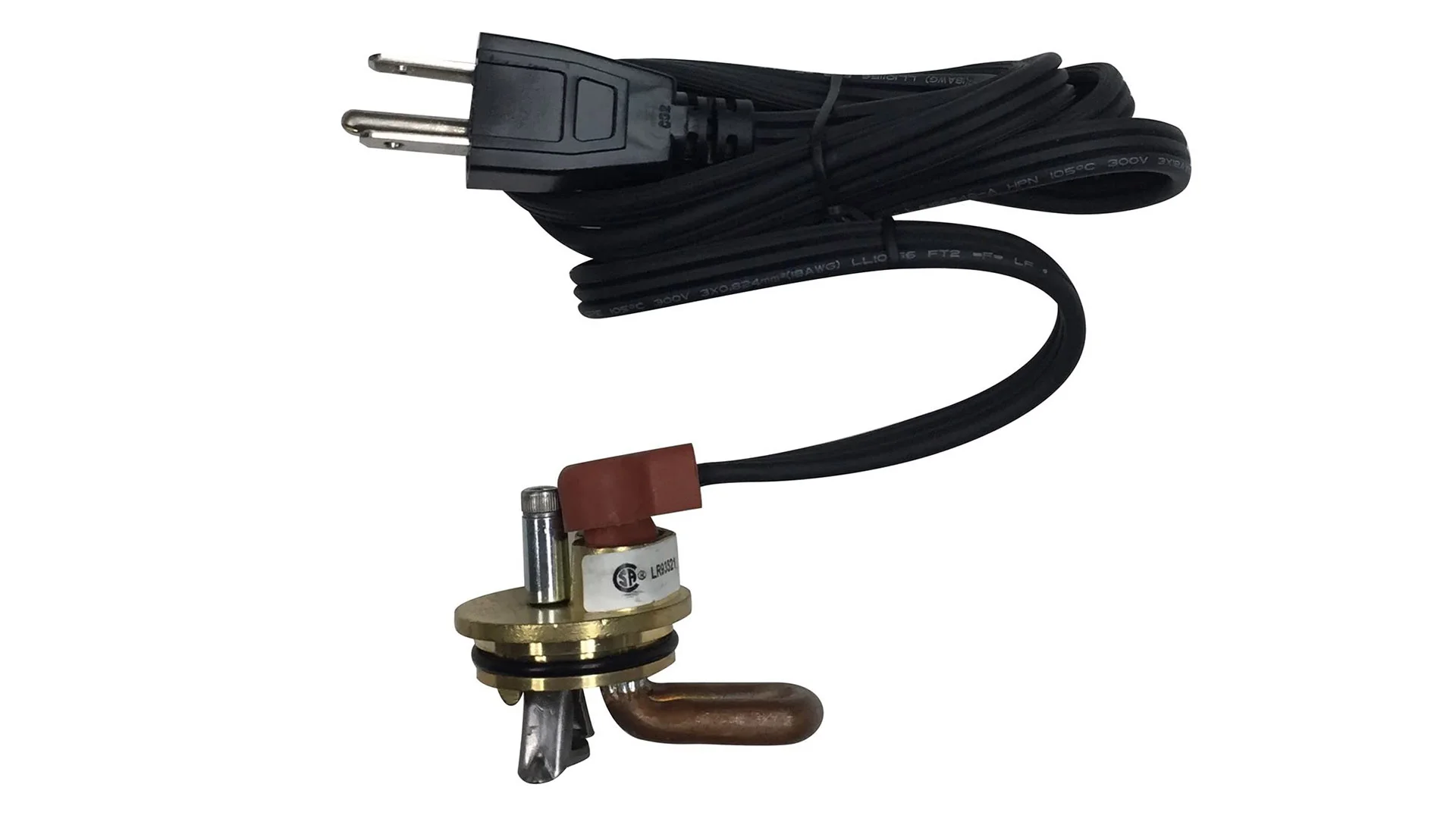A coolant reservoir, also known as an overflow tank or expansion tank, is a crucial component of a vehicle’s cooling system. Its primary function is to store and manage the engine coolant, which plays a vital role in regulating the engine’s temperature.
In this article, we will look into the five most common reasons why your coolant reservoir might be overflowing, shedding light on the potential causes and offering guidance on diagnosing and addressing these issues.
What Is A Coolant & How Does It Work?
The coolant reservoir is a plastic or metal container usually located near the radiator. It stores excess engine coolant when the engine is not running and provides a place for the coolant to expand as it heats up during engine operation.
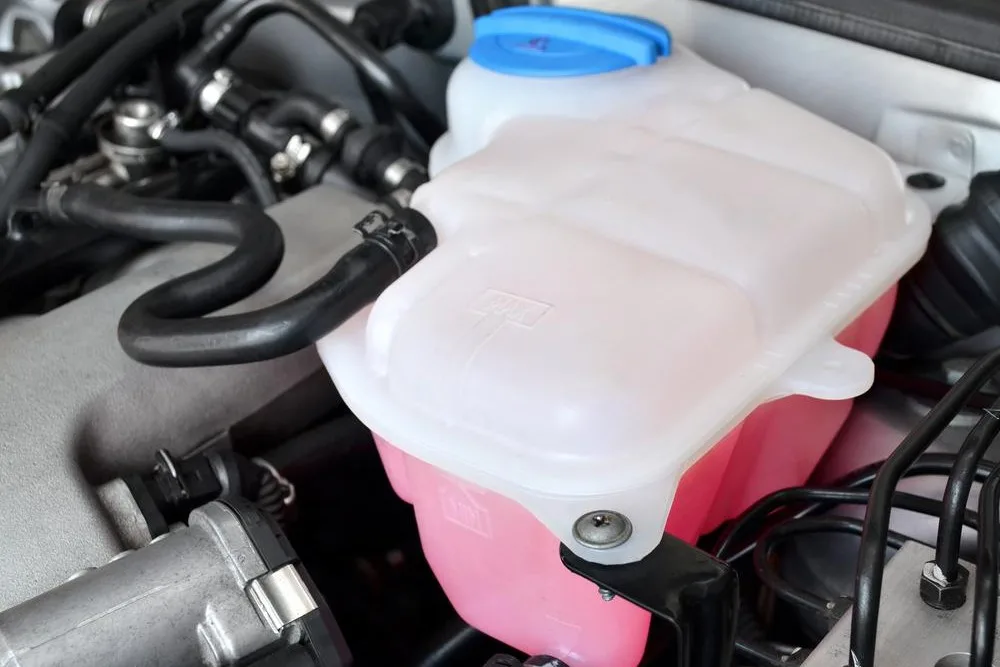
As the engine heats up during operation, the coolant absorbs the heat generated by the combustion process. This hot coolant flows from the engine through the radiator, where it releases heat into the surrounding air, and then returns to the engine to repeat the cooling process.
When the engine is running and heating up, the coolant expands due to the increase in temperature and pressure. Instead of allowing excess coolant to be expelled onto the ground, the expanding coolant is directed into the coolant reservoir.
As the engine cools down, the coolant contracts, creating a vacuum effect. This vacuum draws coolant back into the engine from the reservoir to maintain the proper coolant level in the system.
The coolant reservoir typically has markings indicating the minimum and maximum levels of coolant it should contain. Vehicle owners can visually check the reservoir to ensure that the coolant level is within the recommended range.
5 Common Reasons for Coolant Reservoir Overflow
Coolant reservoir overflow can occur for various reasons, and understanding these common causes is essential for diagnosing and addressing the issue effectively. Here are five common reasons for coolant reservoir overflow:
Coolant Overfill
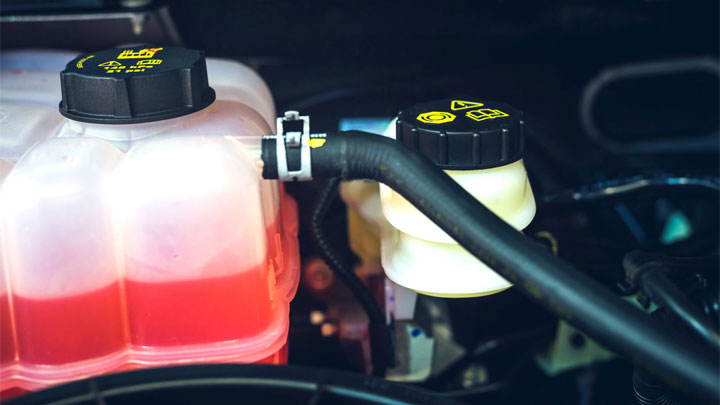
One of the most straightforward reasons for reservoir overflow is overfilling the coolant system. Adding too much coolant can lead to excessive pressure when the engine heats up, causing the excess coolant to be pushed into the reservoir.
To address this issue, drain some coolant from the system until it reaches the recommended level. Refer to your vehicle’s owner’s manual for guidance on the proper coolant level.
Faulty Radiator Cap
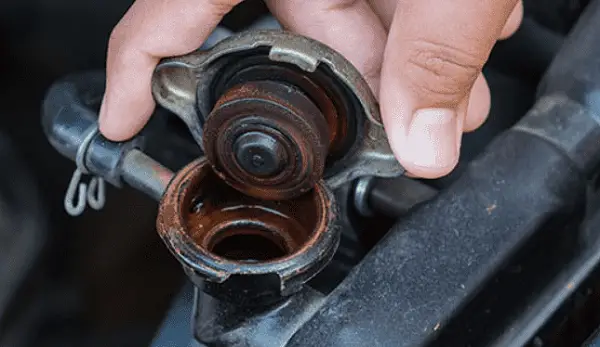
The radiator cap is designed to regulate the pressure within the cooling system. A malfunctioning or worn-out radiator cap can fail to maintain the correct pressure, leading to coolant overflow.
Replace the radiator cap with a new one that matches your vehicle’s specifications. This should help maintain the appropriate pressure in the cooling system.
Air Pocket in the Cooling System
Air trapped within the cooling system can disrupt the circulation of coolant, causing localized overheating and subsequent reservoir overflow.
To remove air pockets, follow the vehicle manufacturer’s recommended procedure for “burping” or bleeding the cooling system. This typically involves running the engine with the radiator cap off and allowing air to escape as the system purges itself.
Coolant Leaks
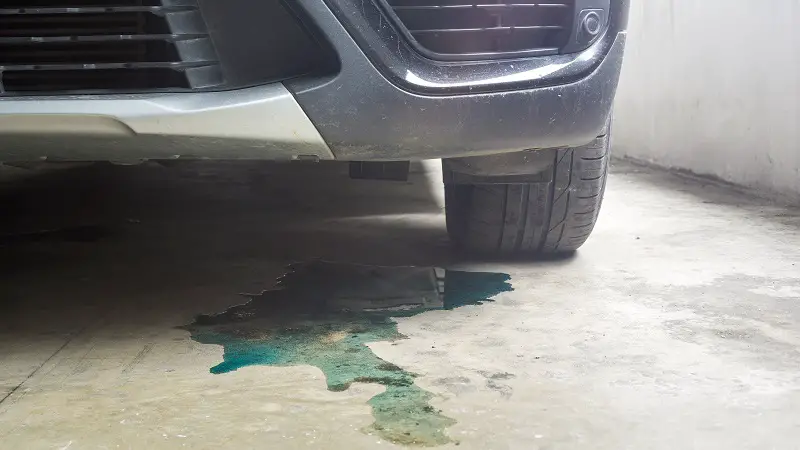
Coolant leaks in the cooling system can lead to a gradual loss of coolant. When the coolant level drops too low, the remaining coolant can overheat and overflow from the reservoir.
Inspect the entire cooling system, including hoses, connections, the radiator, and the water pump, for leaks. Address any leaks promptly by repairing or replacing the affected components.
Failed Water Pump
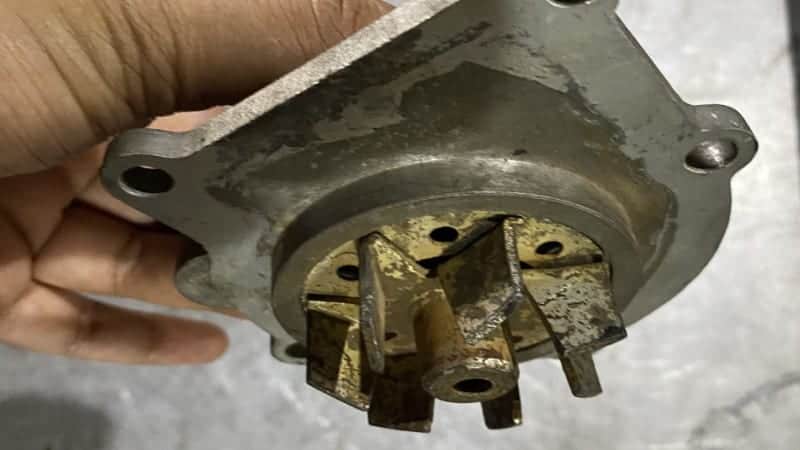
The water pump is responsible for circulating coolant through the engine and radiator. If the water pump fails, coolant circulation can be compromised, resulting in localized overheating and reservoir overflow.
Replace the water pump if it is found to be faulty. Ensure that the new pump is properly installed and functioning to restore proper coolant circulation.
It’s important to note that while these are common reasons for coolant reservoir overflow, there may be other factors specific to your vehicle’s make and model that can contribute to the issue.
If you’re unable to diagnose or address the problem on your own, it’s advisable to seek the assistance of a qualified mechanic to prevent potential engine damage and ensure the proper functioning of your vehicle’s cooling system.
How To Fix The Overflowing Coolant Reservoir?
Fixing an overflowing coolant reservoir requires identifying and addressing the underlying cause of the issue. Here are steps to help you resolve the problem:
Identify the Cause
Before attempting any repairs, it’s crucial to determine the exact reason for the coolant reservoir overflow. Refer to the earlier section on “5 Common Reasons for Coolant Reservoir Overflow” to help diagnose the issue.
Perform visual inspections, check for leaks, and consider any other symptoms (e.g., engine overheating) that may help pinpoint the cause.
Coolant Overfill
If overfilling is the cause, allow the engine to cool down completely.
Carefully remove excess coolant until the level reaches the manufacturer-recommended mark on the reservoir. Dispose of the excess coolant properly, following environmental regulations.
Faulty Radiator Cap
If the radiator cap is suspected to be faulty, replace it with a new one that matches your vehicle’s specifications. Ensure the replacement cap has the correct pressure rating.
Wait for the engine to cool before removing the old cap and installing the new one to prevent burns from hot coolant.
Air Pocket in the Cooling System
Follow the manufacturer’s procedure for “burping” or bleeding the cooling system to remove air pockets.
This typically involves running the engine with the radiator cap off and allowing air to escape as the system purges itself.
Monitor the coolant level and ensure it remains at the correct level after the bleeding process.
Coolant Leaks
Inspect the entire cooling system for leaks, including hoses, connections, the radiator, and the water pump.
Address any identified leaks promptly by repairing or replacing the affected components. Use appropriate sealants or replacement parts.
Top up the coolant to the recommended level after fixing the leaks.
Failed Water Pump
If a failed water pump is suspected, it should be replaced promptly by a qualified mechanic.
Ensure that the new water pump is correctly installed and functioning to restore proper coolant circulation.
Regular Maintenance
To prevent future coolant reservoir overflow issues, practice regular maintenance of your vehicle’s cooling system.
Check coolant levels and inspect the entire cooling system periodically for leaks or wear.
Follow the manufacturer’s recommended maintenance schedule for coolant changes and system flushes.
Professional Assistance
If you are unsure about diagnosing or fixing the issue, or if you encounter any difficulties during the process, seek the assistance of a qualified mechanic.
Professional guidance and expertise can help ensure the proper resolution of the problem and prevent potential engine damage.
Remember that addressing the root cause of the coolant reservoir overflow is crucial to prevent recurring issues and maintain the health and reliability of your vehicle’s cooling system.
RELATED: Ultimate Guide to Tire Checks: Tread Depth, Air Pressure, and More
How To Fix Coolant Coming Out Of Reservoir Cap?
If you’re experiencing coolant coming out of the reservoir cap, it’s essential to address the issue promptly to prevent overheating and potential engine damage.
Here’s how to fix coolant coming out of the reservoir cap:
1. Safety First:
Before you start any work on your vehicle’s cooling system, ensure that the engine is completely cool. Opening the reservoir cap when the engine is hot can result in hot coolant spray and burns.
2. Diagnostic Check:
Begin by visually inspecting the reservoir cap and the surrounding area for any signs of damage, wear, or debris. Ensure that the cap is properly seated and secure.
Check if the rubber gasket or seal on the underside of the cap is in good condition. A damaged or deteriorated gasket can lead to coolant leaks.
3. Cap Replacement:
If you notice any visible damage to the cap or its seal, or if it appears worn, it’s advisable to replace the reservoir cap with a new one that matches your vehicle’s specifications.
Purchase a radiator cap that has the correct pressure rating for your vehicle, typically specified in pounds per square inch (psi). This information can usually be found in your vehicle’s owner’s manual or on the old cap.
4. Coolant System Pressure Test:
If replacing the cap doesn’t resolve the issue, consider performing a coolant system pressure test. This test can help identify any underlying problems, such as leaks or pressure irregularities, within the cooling system.
A pressure tester can be attached to the radiator or reservoir cap opening to pressurize the system. If there’s a leak, it should become evident during the test.
5. Check for System Leaks:
Inspect the entire cooling system, including hoses, connections, the radiator, the water pump, and the engine block, for any signs of coolant leaks. Leaks can lead to increased pressure within the system, causing coolant to escape from the reservoir cap.
Address any identified leaks by repairing or replacing the affected components using appropriate sealants or replacement parts.
6. Burping or Bleeding the System:
Sometimes, air pockets in the cooling system can cause pressure irregularities and coolant overflow. Perform the manufacturer-recommended procedure for “burping” or bleeding the cooling system to remove air pockets.
Follow the steps outlined in your vehicle’s service manual for this process, which often involves running the engine with the radiator cap off and allowing air to escape as the system purges itself.
Monitor the coolant level and ensure it remains at the correct level after bleeding.
7. Professional Assistance:
If you are unable to resolve the issue yourself or if you suspect a more significant problem with the cooling system, it’s advisable to seek the assistance of a qualified mechanic.
Professional expertise can help diagnose and fix complex cooling system issues effectively.
FAQ
What causes the coolant reservoir to overflow?
The coolant reservoir can overflow due to various reasons, including overfilling the coolant system, a faulty radiator cap, air pockets in the cooling system, coolant leaks, or a failed water pump.
How do you fix an overflowing coolant reservoir?
To fix an overflowing coolant reservoir, you need to identify and address the underlying cause. This may involve actions such as reducing coolant levels (if overfilled), replacing the radiator cap, bleeding the cooling system to remove air pockets, fixing coolant leaks, or replacing a failed water pump.
Why is my coolant reservoir suddenly full?
A sudden increase in coolant reservoir level can be caused by overfilling the coolant system or a sudden release of pressure due to a malfunctioning radiator cap. It’s essential to check for the root cause and address it promptly.
What causes coolant to expand?
Coolant expands when heated. During engine operation, the coolant absorbs heat generated by combustion, causing it to expand and increase in pressure. This expansion is necessary to regulate engine temperature.
When coolant expands, where does it go?
When coolant expands, it typically flows into the coolant reservoir or overflow tank. The reservoir provides a space for the excess coolant to go as it expands. Once the engine cools down, the coolant is drawn back into the cooling system.
What can be mistaken for a blown head gasket?
Several issues can be mistaken for a blown head gasket, including:
- Coolant leaks: Leaks in the cooling system can result in white smoke or steam from the exhaust, similar to head gasket issues.
- Exhaust condensation: In cold weather, normal condensation in the exhaust system may be mistaken for a blown head gasket.
- Oil leaks: Oil leaks can sometimes mix with coolant, leading to confusion.
- Engine overheating: Engine overheating can occur due to various reasons, not just a blown head gasket.


